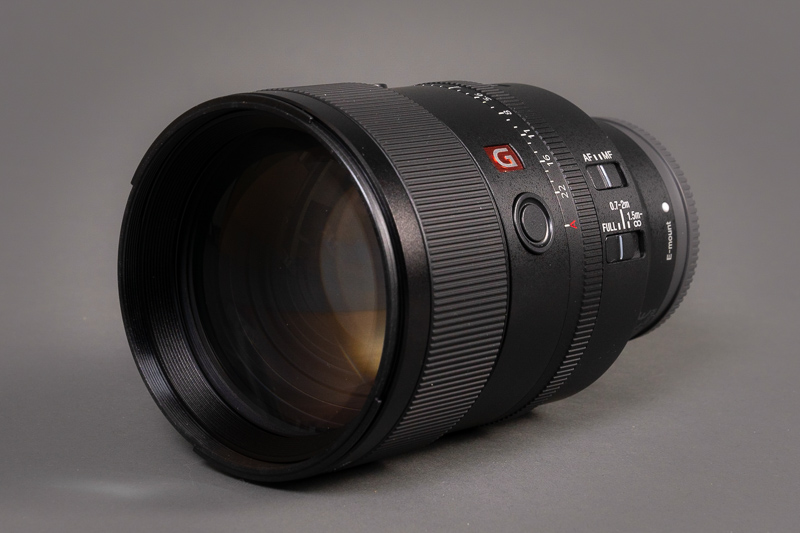
The Sony 1.8/135 GM is a highly anticipated lens that has been rumored for some time. Being a GM lens, it is part of a line which includes some of my favorite lenses like the Sony FE 1.4/24 GM and the Sony FE 1.4/85 GM. My expectations are as high as its price – can it live up to that?
Sample Images


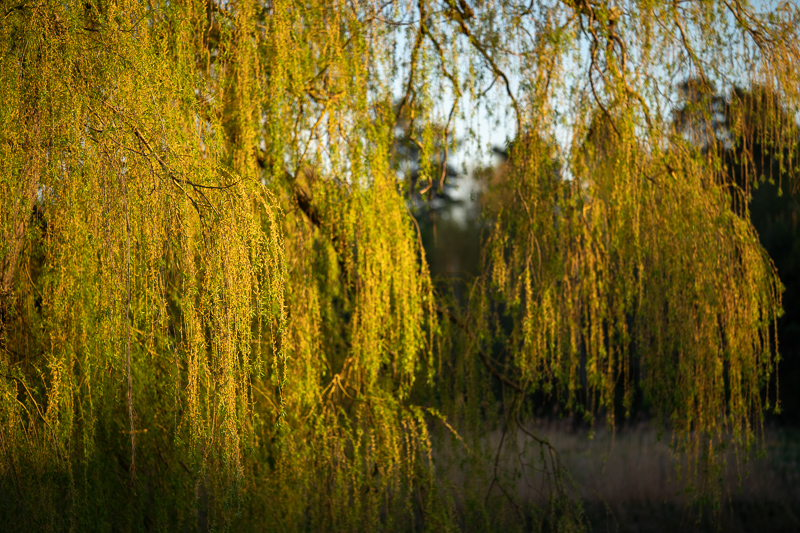
Specifications
The Sony FE 135mm 1.8 GM has the following specifications
-
- Diameter: 89,5 mm
- Field of view: 18° (diagonally)
- Length: 127 mm
- Weight: 950g
- Filter Diameter: 82 mm
- Number of Aperture Blades: 11 (rounded)
- Elements/Groups: 13/10
- Close Focusing Distance: 0.7 m
- Maximum Magnification: 1:4
- Mount: Sony E
This is a review of my own lens!
For $1899/1999€ you can order this lens from amazon.com, amazon.de (affiliate links).
Build Quality / Handling
The build quality of the Sony FE 1.8/135 GM is exceptionally good. The polycarbonate body is sturdy, stiff and scratch resistant like we know from the other GM lenses that we have reviewed. The focus ring is rubberized without being sticky. Like all recent Sony lenses, the focus ring has linear coupling and has a 135 degree throw from the minimum focusing distance to infinity. In the typical portrait range, this is a bit steep, but due to the sheer width of the ring (89,5mm) and the good application, it is very precise and it always possible to find the right setting.
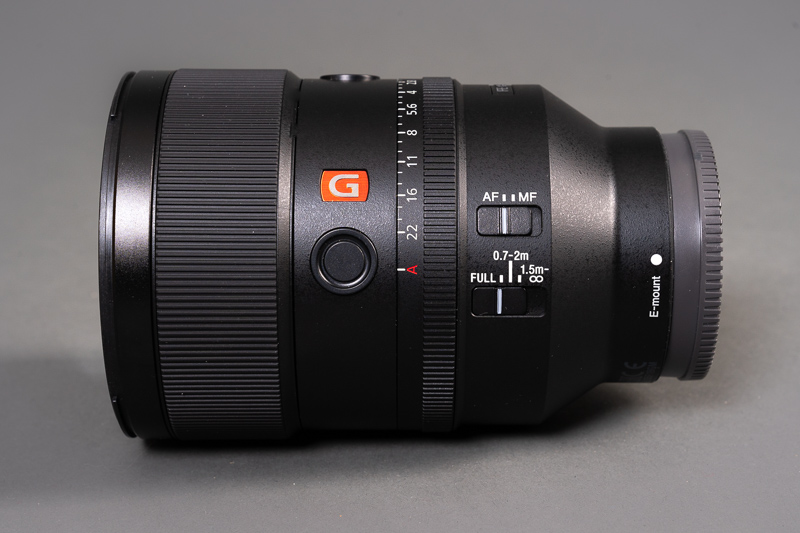
The lens has all features of current high end Sony lenses. As well as the declickable aperture ring (1/3 stop detente), there is an AF/MF switch, two programmable buttons and a focus limiter. The latter is very welcome because the lens has great close focusing capabilities (1:4 max magnification).
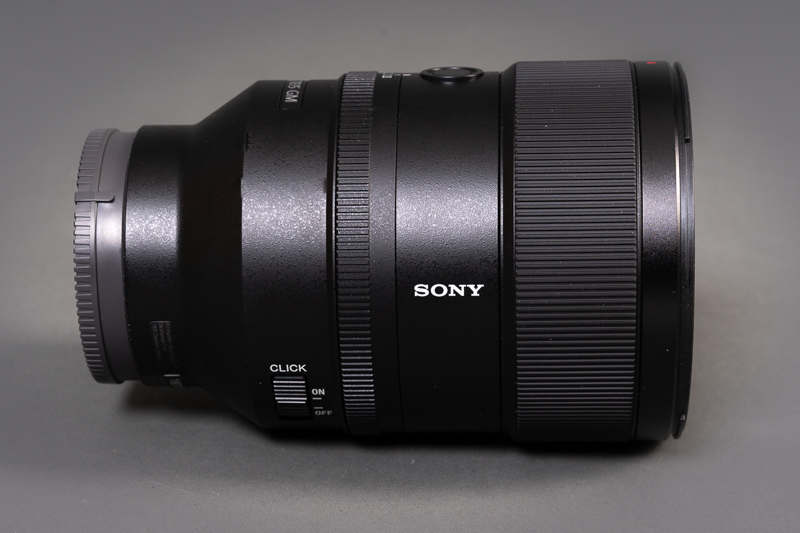
On the rear of the lens, you can see that the lens has a rubber gasket around the mount. The lens is dust and moisture resistant like the other GM lenses.
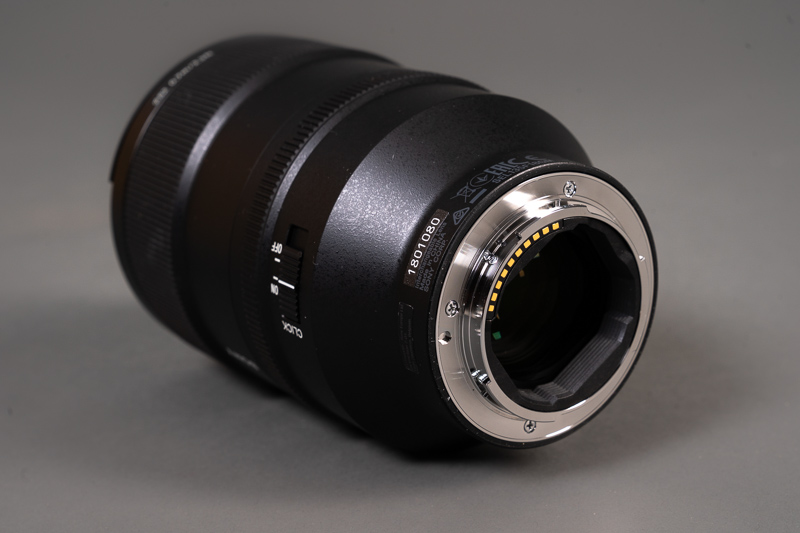
The lens hood is massive and very sturdy. Its front is rubberized for further protection and the inside of the hood is flocked. It also features a release button which prevents the lens from mistakenly dismounting. With a weight of 78g, it’s still acceptably light but it adds significantly to the bulk of the lens:
This lens is big and heavy (950g), no doubt about that. If you take its focal length, speed and maximum magnification into account, this doesn’t seem too excessive: other options with these specification are larger and heavier.
The most comparable lens is terms of size the Sony 2.8/24-70 GM. The 135 is a bit smaller and thinner but feels quite comparable in handling and has the same 82mm filter thread.
Having a larger grip helps a lot to handle these large and heavy lenses. I currently use the Meike MK-X1EM, there is also the native Sony GP-X1EM or several battery grips and L-brackets.
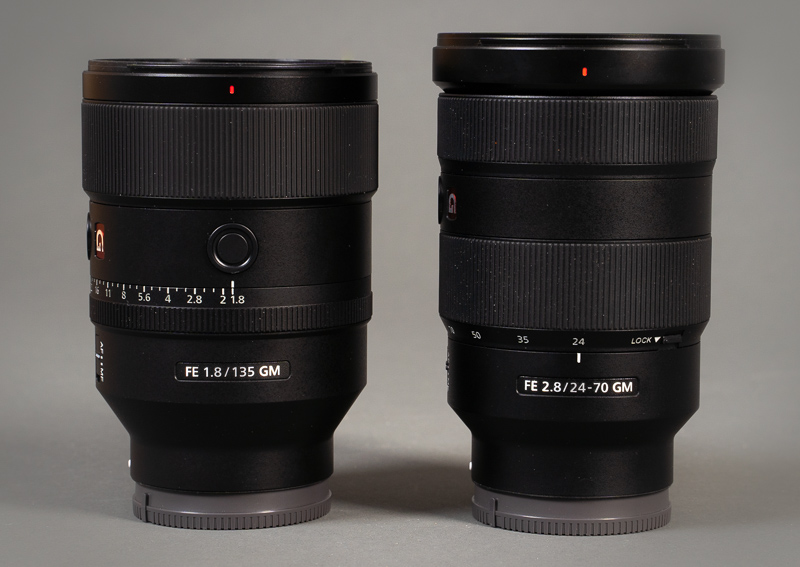
In contrast to the Sony FE 1.4/85 GM, the AF performance of the Sony FE 1.8/135 GM is sensational. Two linear motors are used to move two different groups silent and fast. This helps a lot to keep the focusing fast over the whole focal range. Even at the minimum focusing distance, the focus is very fast which is quite different to dedicated macro lenses like the Sony FE 2.8/90 macro lens. This makes macro photography much easier and faster, especially for less patient or advanced photographers. I also think that this will be very useful for wedding end event close ups.
In general use, the focus is very fast and almost instantaneous. The focus limiter can help to minimize hunting. In my short time of use, the lens had no issues tracking my wild running kid, even in complicated light. Furthermore, focus acquisition is extremely fast. This will be very welcome for action and sports photographers. This makes the lens very different to lenses like the Sony FE 1.4/85 GM or third party lenses that offer decent but not action-ready autofocus.
Sharpness
infinity
I will skip the detailed discussion of the different apertures as it will be very boring. From f1.8 to diffraction limit, this lens performs exactely the same (on my A7iii) with the exception of vignetting wide open. This is nothing short of sensational and probably the best performance we have seen yet on the blog. Seeing that, I have no reason to disbelieve Lensrentals claim that the Sony FE 1.8/135 GM is the sharpest lens out there besides super telephoto lenses.

Close Up
Close up sharpness is great wide open. I gets a little boost in contrast when stipping down to f/2 and f/2.8 but I doubt that choosing any of these stops will have a field relevant difference in sharpness (except of increasing depth of field of course). At f4, diffraction already starts to show, there is no focus shift.

In the sample below, you can see how much detail can be resolved when using the Sony FE 1.8/135 GM wide open for close up shooting:
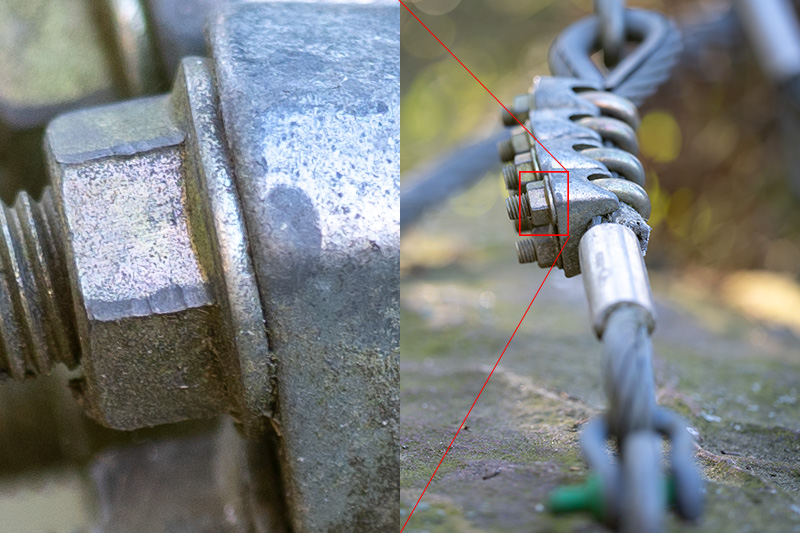
Chromatic Aberrations
Longitudinal
LocA is very well controlled and can be only spotted in the harshest contrast. The sample below (100% crop) shows the largest amount of LoCA that I have seen yet.
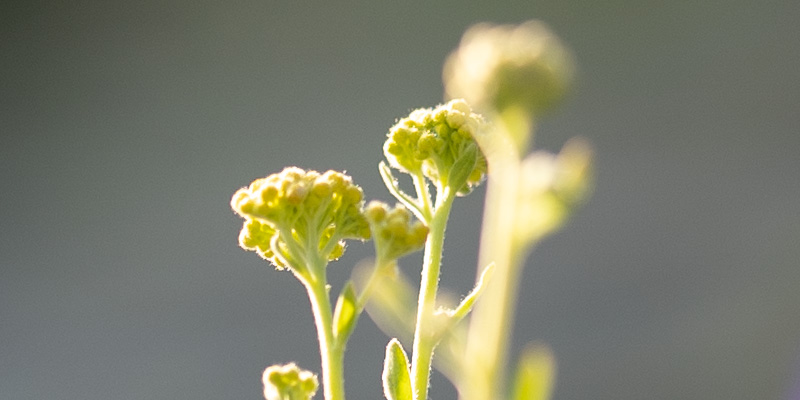
This is what the fountain test looks like. I think this is a very good performance that can only be beaten by slower APO-lenses like the Zeiss Batis 2.8/135 or the Voigtländer Macro APO-Lanthar 2/65.

Lateral
I can’t find any, not even in uncorrected JPEG files:
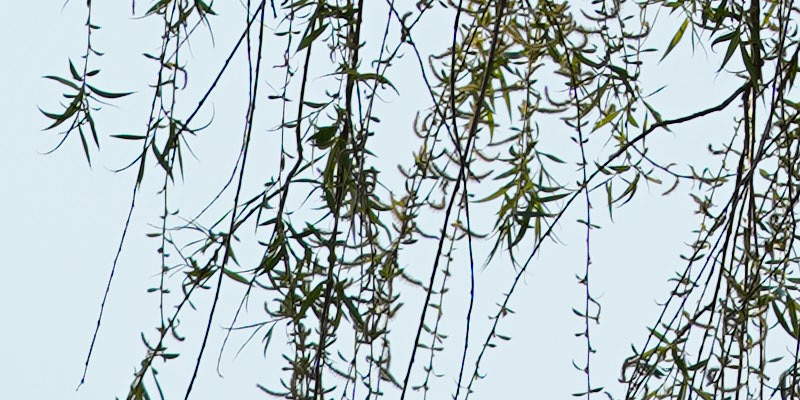
Flare resistance
Ring Flare & Ghosting
This lens can show ghostings with the bright sun in the frame. The glossy filter thread causes reflections that show in a ring flare.
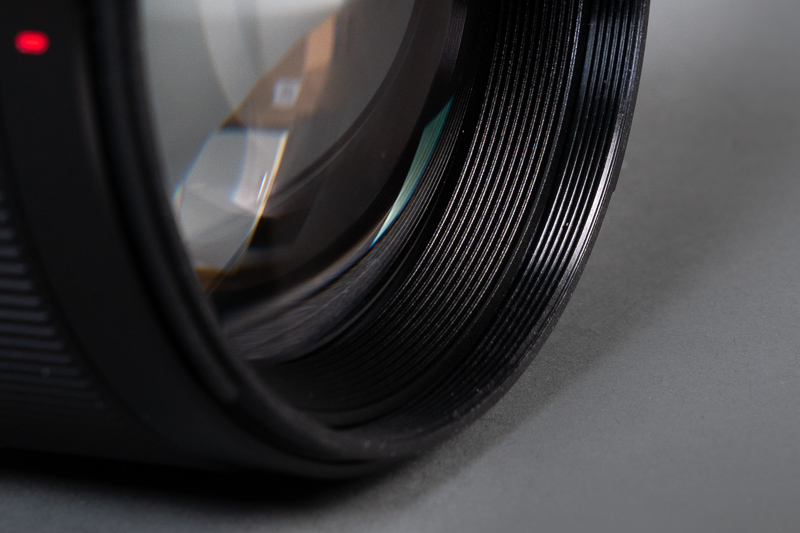
Flocking the thread or using the proprietary lens hood a small hood (a short one like this is enough) can prevent the lens from this behavior. Ghostings can appear as well.
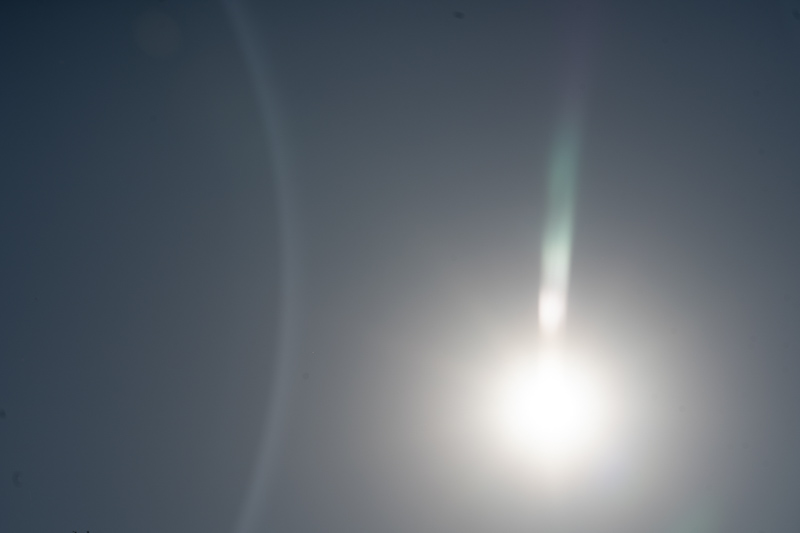
Like the Sony FE 1.4/85 GM, the lens doesn’t like the sun just outside of the frame:
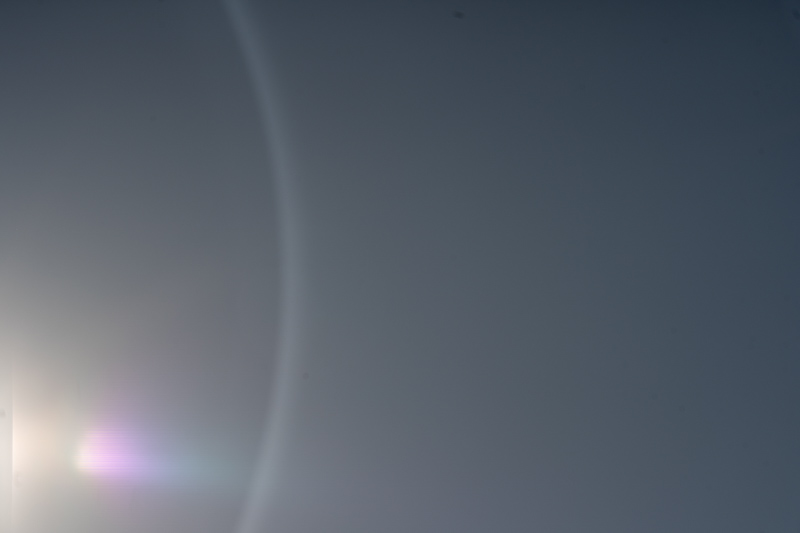
Veiling Flare
Like almost all fast telephoto lenses, this lens shows veiling flare when pointed against the sun in several angles:
Distortion
Minor pincushion distortion. LR correction value is -1.
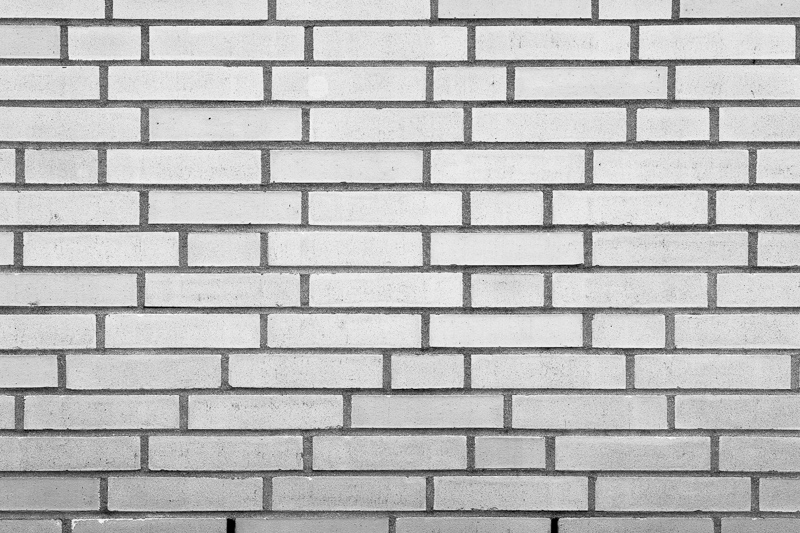
Vignetting (light falloff)
With a maximum value of 1.65 EV, vignetting is low even wide open and mostly gone at f2.8.
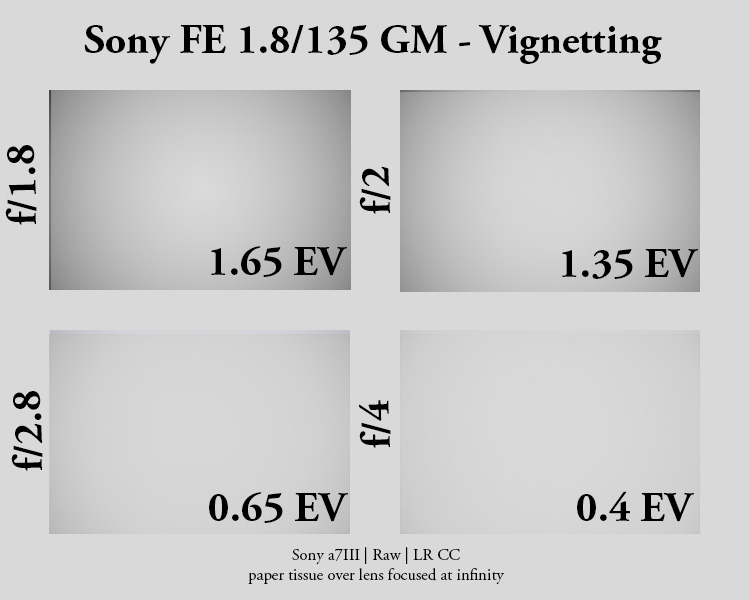
Bokeh
In contrast to the latest GM prime lenses like the Sony 1.4/24 GM and the Sony 1.4/85 GM, the Sony 1.8/135 GM lacks any spherical aberrations (in the transition zone) wide open, optical errors are generally better corrected and contrast is extremely high, even wide open. This also results in more contrast in the bokeh which makes it more neutral and less “creamy” looking:

Bokeh balls at f1.8 show a slight and thin outlining and are very clean otherwise:
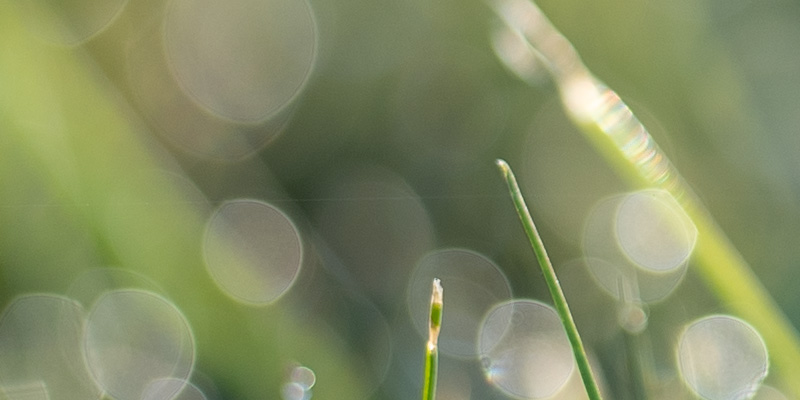
At the edges and at f1.8, the Sony FE 1.8/135 GM shows cat eye shaped bokeh balls (mechanical vignetting) which get more rounded when stopped down.
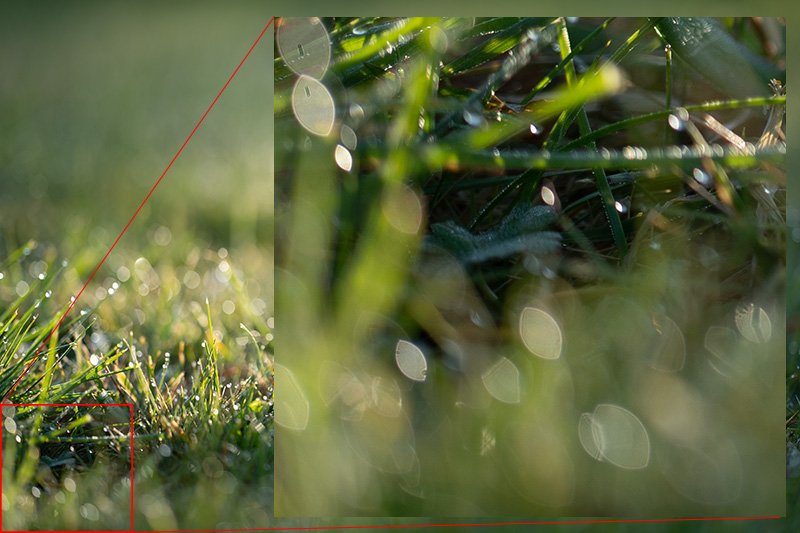
A closer look at the cat eyes (mechanical vignetting) shows that they are much more rounded at f2.8 and practically gone at f4.
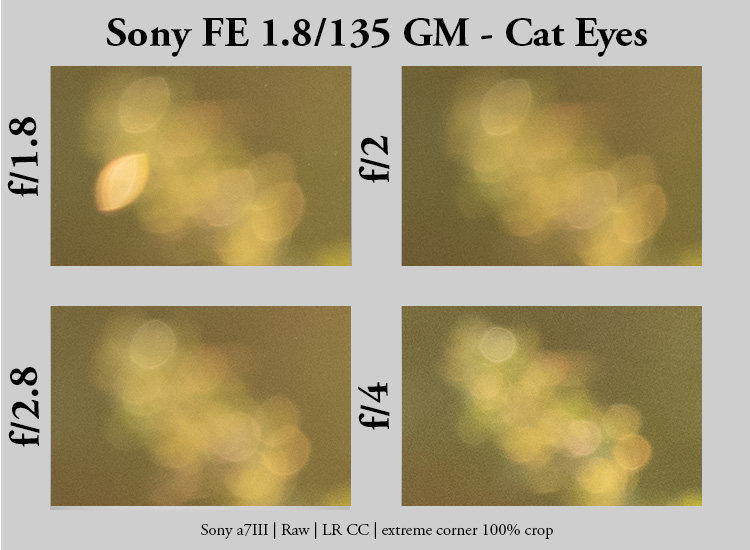
Stopped down, outlining gets stronger and a slight onion ring pattern starts to show around the edge. This is mostly distracting in small to moderately sized highlights like in the sample at f11 below:

Alternatives
Being comparable in specs, this lens is the most obvious competitor to the Sony FE 1.8/135 GM. The Sigma also comes with native mount and almost native like performance. First tests showed that the Sony focuses faster and more reliable than the Sigma which is not a surprise. The Sony is sharper but the Sigma is no slouch either, this should not be the deciding factor. The rendering is very comparable, check out Fred Mirandas comparison. The Sony is better equipped, lighter and smaller while the Sigma is quite a bit cheaper. If you can afford it, the Sony is worth the premium price in my opinion.
Zeiss Batis APO-Sonnar T* 2.8/135
The Batis and the GM are both native lenses with almost the same price tag. Both lenses are terifficly sharp and contrasty. The Sony offers more speed, better AF (although the Batis is not bad) and more manual controls. The Batis doesn’t exhibit any LoCA, is lighter, a bit smaller (although unnecessary bulky) and offers better flare performance. For most people, the GM will be the best choice but if travel or landscape photography is you main subject, the Batis is worth a thought.
This is the cheapest way to get a fast 135mm lens with autofocus. Optically, this lens starts to feel dated but it is still capable of delivering fine images.
The Samyang 2/135 offers very good image quality for a very low price tag. It is very large and offers only manual focus, but if you shoot mostly static subjects, this can be worth a thought.
Sony Zeiss Sonnar T* 1.8/135 ZA
This is the real ancestor of the Sony FE 1.8/135 GM. This lens doesn’t offer perfect results wide open but beautiful and strikingly soft bokeh. Because of the screw driven AF and the dated LA-EA4, it can be a pain to use these days.
Conclusion
good
|
average
|
not good
|
Mirror, mirror on the wall, who is the sharpest of them all? It is the Sony FE 1.8/135 GM, at least for all lenses that I have used yet. It is the first lens where nothing happens when I stop down except of decreasing vignetting and increasing diffraction. Even the macro and microcontrast is completely there wide open.
Besides sharpness, I can also praise the good CA correction, low distortion, low vignetting and the close up sharpness.The proven GM build quality makes using this lens a joy, especially the large amount of manual lens controls is very useful.
A major design flaw and the only real weakness is the glossy filter thread that makes the flare performance look worse than it actually is. Using a lens hood or flocking the thread is highly recommended.
Having used this lens for a few days now, I can say already that this lens renders very differently to the Sony FE 1.4/85 GM. The 1.8/135 lacks the ultimate creamy bokeh and shows more cat eye shaped bokeh balls. It is much sharper wide open and focuses as fast as is imaginable in a lens like this.
This makes it a top pick for action and sports photographers. Given the stunning optical performance, I can’t understand why Sony decided to exclude compatibility with teleconverters. Portrait and wedding photographers will also love this lens as it is very reliable and versatile (for a 135mm prime lens).
I read quite a few negative comments about the price. I can say with confidence that this lens reflects a decent price/performance ratio and that this lens is a premium performer at a premium price tag.
For $1899/1999€ you can order this lens from amazon.com, amazon.de (affiliate links).
Editors note: This review was initially intended to be a rolling review. However, due to good light and lots of opportunities to use the lens, I have already done all the technical testing to rate the review “complete”. Nevertheless, there will be a few updates in the future, mostly covering more portrait sample images and experience reports.
More Sample Images
All sample images and many more can be downloaded in my flickr album of the Sony FE 1.8/135 GM.

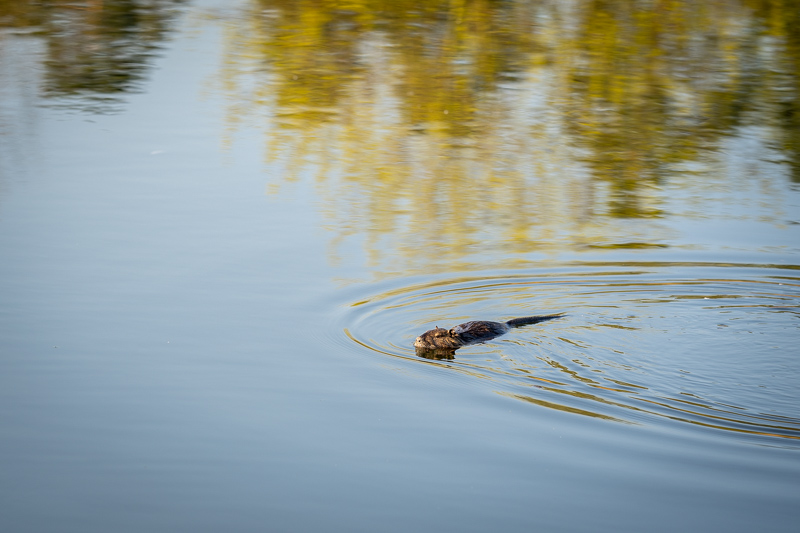



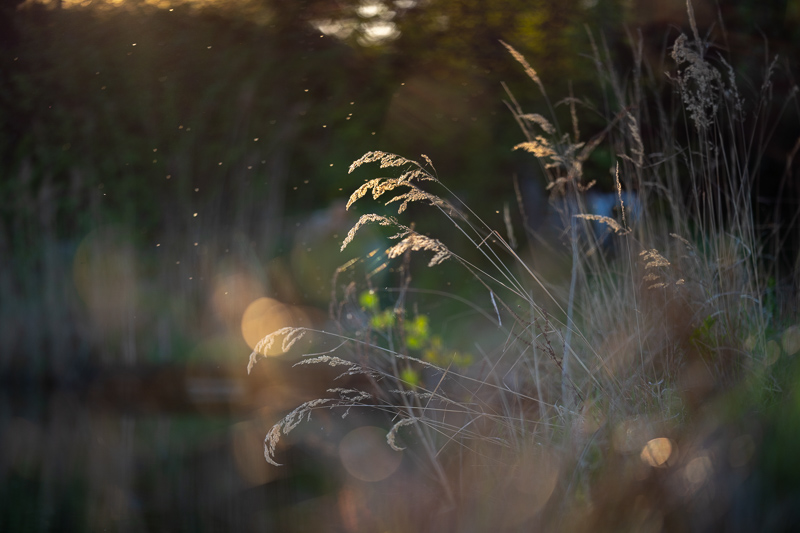
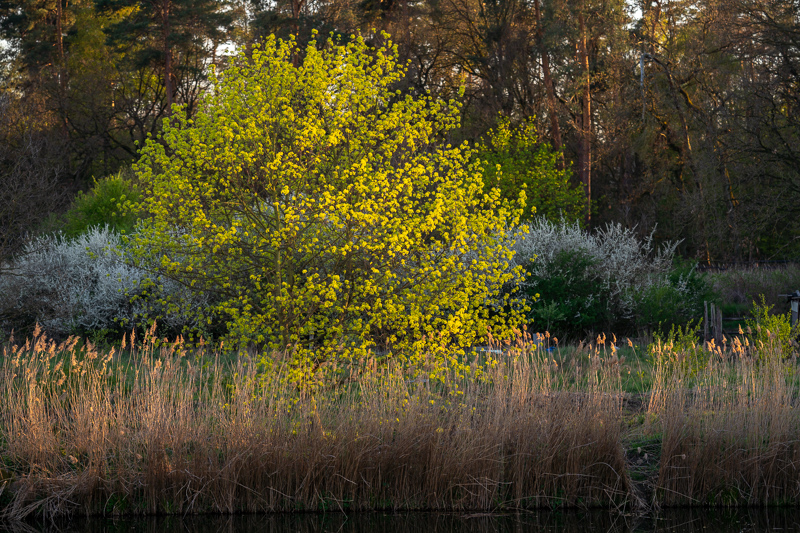
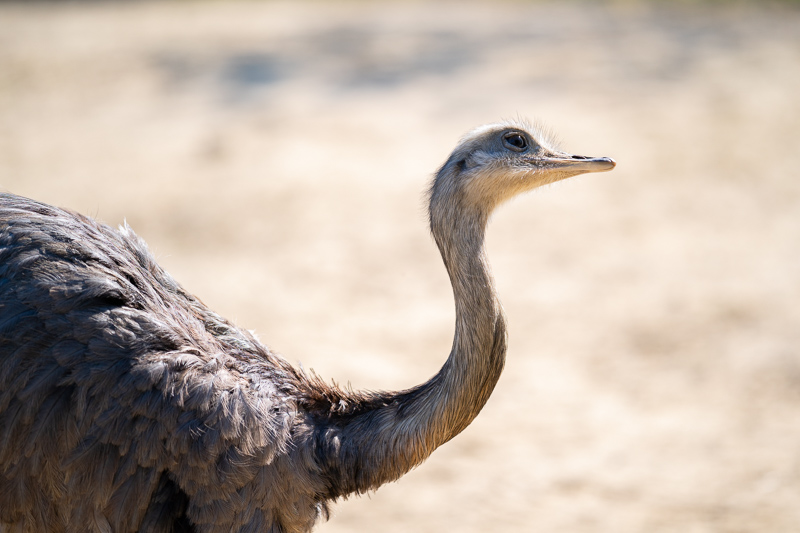


Jannik Peters
Latest posts by Jannik Peters (see all)
- A beginner’s guide to bird photography – Episode 1: Sharpening your senses - August 3, 2021
- Review: Tamron 35mm F/2.8 Di III OSD M1:2 - March 8, 2020
- Review: Zeiss Batis 2/40 CF after the Firmware Update - August 16, 2019
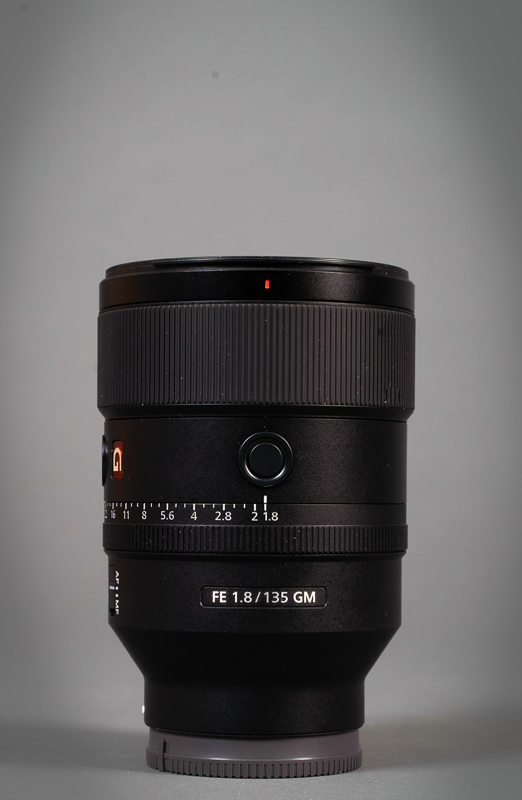
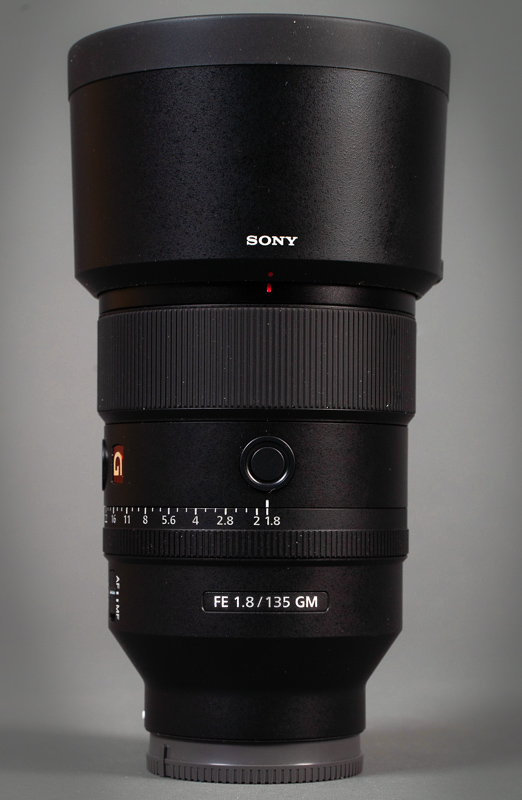
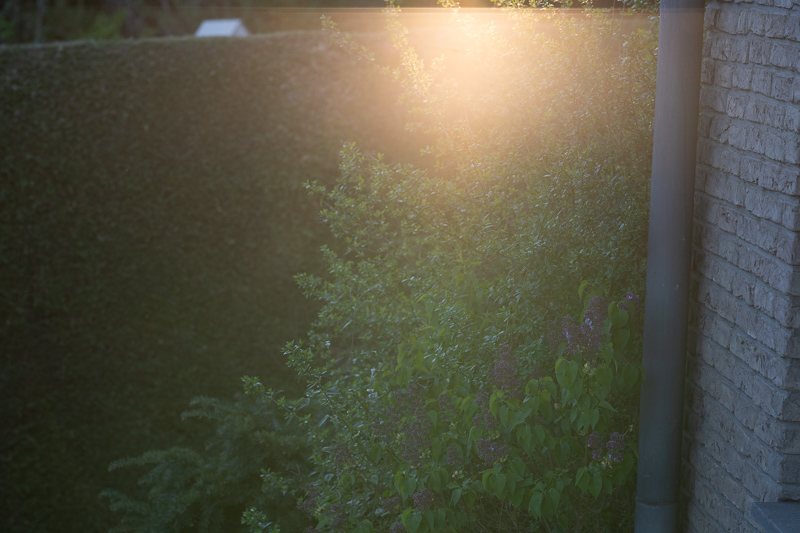
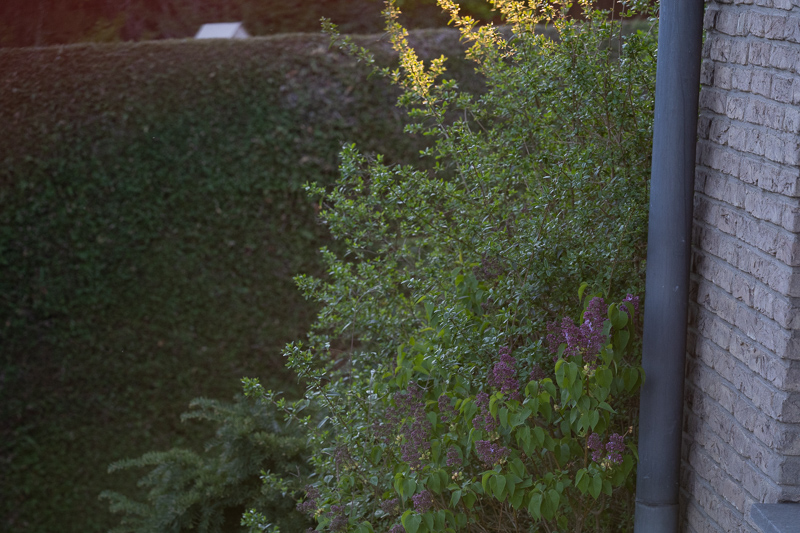
I can’t believe sony made such a mistake with the filter thread. Anyway, the sharpest lens in the world! What can I say more. Maybe I’ll think about buying it after 80mp+ new camera release. I wonder when will it be.
Thanks for the nice review, as always.
Just use the hood 🙂 If the filter thread isn’t smooth(shiney) the filter will stuck in the thread.
Do you think adding a UV Protective filter will fix this problem?
Great review as always here..! Thanks!
135 GM vs nikkor 105 1.4e?
I won’t do that comparison. Compatibility with Sony is not there to a degree where I would rate the Nikkor useful for Sony users, especially given its price tag.
Come on… the 105E seems to work good enough with the commlite, at least for portraiture and u guys are the only serious people about OOF rendering. So i’m very eager for at least a comment on this.
Pretty sure that Jannik isn’t interested in “good enough” AF performance. And to say something of substance one would have to use the Nikon. Which no one of us has.
Nice review Jannik, but in the lateral CA part, I can clearly see purple fringing on some of the tree branches. Can you check again?
Wierd no one replies to this? None of you see the purple fringing on those tree branches?
Purple fringing is from longitudinal, not lateral, chromatic aberration. It’s caused by poorly focused violet light.
Lateral aberration causes slight color outlines, usually red/cyan, on opposite sides of details like branches.
Hi jannik!
Angesehen vom top review:
Hab gesehen, dass du dieselben flares wie meine defekte a7iii hatte (diese rundem bögen bei kurzen belichtungen mit mechanischem shutter). Falls das nicht eine eigenheit der linse ist: macht sony normal auf Gewährleistung, da ist ein „lightleak“ bei den lamellen vom verschluss.
Lg
Bernhard
Vielen Dank für den Hinweis!
Ich werde mir das mal genauer ansehen, das bereitet mir etwas Sorgen.
Bernhard,
kannst Du das mti den flares bitte nochmal erklären bzw. auf die Bilder verweisen, wo man das sieht (runde Bögen)?
hi und sorry für die lange wartezeit!
am besten, du schaust dir ein paar beispiele auf https://www.facebook.com/groups/A7III/search/?query=shutter&epa=SEARCH_BOX an – da sieht man auch den grund für das problem.
hat mich (bzw. meiner versicherung) 330€ gekostet das zu reparieren, nur als “vorwarnung” 🙂
Hi Bernhard,
ich habe meie A7iii gerade zu Schuhmann nach Linz gesendet und lasse sie dort reparieren. Vermute auch, dass Sony in diesem Garantiefall 330€ überweisen darf 😉
VG, Jannik
Have any idea how it compares to the Zeiss 135 f/2 APO? I’m especially interested in OOF rendering around portrait distances.
No, I have never used that lens.
Great review as ever Jannik. I’m enjoying this lens too. I pre-ordered it and received my copy last week. This a deserving replacement to my Sony Zeiss 135 F1.8 A mount lens which I reluctantly parted with 2 years ago (manual focus on my A7RII was too much of a pain for event photography) The bokeh on this new lens isn’t quiet as smooth as but the focussing speed is a massive improvement.
Thank you for the effort in reviewing the GM 135. I have the Sony Zeiss 135 F1.8 in and use it with the LA-EA4 with great results. It’s actually my favorite A-mount lens. Are you guys planning to review the Sigma 105mm f/1.4 DG HSM Art for Sony E? I’m tempted to keep my old A-mount 135 and get the Sigma. Thoughts?
It’s not very likely that we will be reviewing it. The Sigma 105 is hugely heavy, and none of us are studio photographers of the kind that would enjoy using something as big as this. Optically it appears to be outstanding: one of the best short teles every made (the only better one is likely the GM135). Only the mechanical vignetting is worse than, say, the GM85 but it’s as good or better than the competition in its focal length and speed. I think there are absolutely no *optical* reasons not to choose it: but I definitely recommend you go to a store and try out how it feels before committing. It’s a beast.
Optisch liegen zwischen dem GM135, dem Sigma 135 1.8 und 105 1.4 keine Welten.
Jedoch die Geschwindigkeit und Treffsicherheit vom Autofokus ist an der A7RII und A7II beim GM135 deutlich besser als bei den Sigmas.
Das 105èr ist noch einmal langsamer als das 135èr Art.
Apologies I’m the only team member whose German is not good enough to accurately read your question.
Hi Jannik. Thanks for the excellent review as always. Will there be an illustration on how to flock the filter thread without losing the ability of attaching filters? I’ve also lost some pictures due to the flare when using 85GM (I think this point should be added to your 85GM review :D)
Had the same issue with the 85GM, we are working on it 🙂
Hi.
As always it’s a pleasure to browse your site and look at all the lenses I will never buy but can at least enjoy through your excellent photography.
Have any of you added the 135mm GM to your personal kit/s?
Any update on how to flock the filter thread?
Thanks
Jannik has added it and still enjoys it a lot but I am not sure he has done anything about the filter thread.
Thank you for the reply. What type of photography does he use it for – e.g. candid family photos, street photography, landscapes, portraits?
Family and portraits mostly.
Thank you
Glänzendes Filtergewinde:
Wäre es sinnvoll, auch wenn es bei einem so teuren Objektiv billig klingt, das Filtergewinde mit schwarzem edding 3300 permanent marker zu beschichten?? Es ist fast überall für ca. 3,0 Euro zu haben, deckt stark. Die Ausdünstung verflüchtigt sich nach wenigen Minuten, zumindest riecht man danach nichts mehr.
Thank you for the review. A lens to dream about 😉
I would like to say: thank you. But your review did cost me a lot of money 😉
The major drawback of the lens from my point of view is its size and weight. But anyway it will have a fixed place in my camera back 🙂
Very interesting that this lens has no stabilisation, but the Batis 135 and GM 85 have. I guess that shooting handheld at 1.4 one might pref lens stabilisation to correct for some shake, do you agree? Any ideas on lens vs body stabilisation? And effect on image quality?
Probably that is partly why focus is so quick.
GM 85mm 1.4 does not have OSS.
OSS is more effective at longer focal lengths.
OSS and IBIS can both introduce tilt, shift and degrade image quality, especially in the corner regions.
Thank you for your review. I have a Sony 135mm F/1.8 lens, what adapter does it use to mount it to the Canon EOS-1n body, and how much does this adapter cost? Thank you.
There is no adapter that will allow you to do that.